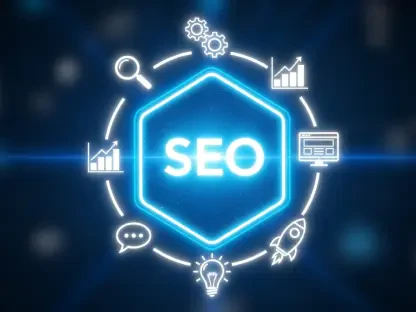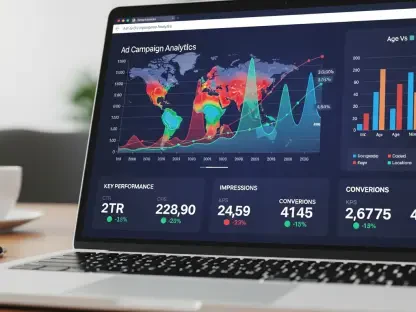Search Engine Marketing (SEM) has become a crucial component of digital marketing strategies for businesses of all sizes aiming to increase their online visibility and attract potential customers. As we approach 2024, understanding the costs associated with SEM is vital for businesses to allocate resources effectively and maximize their return on investment (ROI). This detailed analysis explores the various aspects of SEM costs, the differences between SEM and SEO, the typical expenses businesses face, and the factors influencing these costs. In addition, it examines the pricing models used by SEM agencies and offers insights into industry trends and consensus viewpoints.
Differences Between SEO and SEM
Search Engine Optimization (SEO) is the practice of optimizing a website to rank higher in organic search engine results, focusing on improving site content, keywords, and backlinks. On the other hand, Search Engine Marketing (SEM) involves paying for ad placement in search engine results through strategies like pay-per-click (PPC) advertising, which can provide immediate visibility. Both SEO and SEM aim to increase a website’s visibility and drive more traffic, but SEO builds long-term value, while SEM can yield quicker results. Understanding the differences between these two strategies is essential for effectively leveraging search engines to benefit your business.
Understanding SEO
Search Engine Optimization (SEO) focuses on generating organic traffic through optimizing content, website structure, and off-page elements like backlinks. The goal is to improve a website’s ranking in search engine results pages (SERPs) without directly paying for placement. The benefits of SEO are typically seen over the long term and require ongoing effort and expertise to maintain high rankings.
SEO involves a variety of techniques, such as keyword optimization, improving site speed, and enhancing user experience. Content creation plays a pivotal role, as well-optimized and high-quality content is more likely to be indexed and ranked higher by search engines. Additionally, off-page SEO strategies, such as acquiring credible backlinks from other websites, contribute significantly to a site’s authority and visibility. The cumulative effect of these efforts helps in building sustained organic traffic, reducing dependency on paid advertising over time.
Understanding SEM
Search Engine Marketing (SEM), on the other hand, involves paying for advertisements on search engines to drive traffic to a website. This method, often referred to as Pay-Per-Click (PPC) advertising, includes purchasing ads that appear in sponsored sections of search engine results. Each time a user clicks on one of these ads, the advertiser pays a fee to the search engine. SEM provides more immediate visibility compared to SEO, but it requires a financial investment for each click.
The primary advantage of SEM is its ability to deliver quick results. As soon as a campaign is launched, ads can appear in search results, driving traffic almost instantly. Additionally, SEM allows for precise targeting based on factors such as location, demographics, and user behavior, ensuring ads reach the most relevant audience. However, the cost associated with SEM can vary greatly, particularly in competitive industries where high demand for keywords drives up the cost per click. Businesses must carefully manage their SEM budgets to balance cost and effectiveness.
Combining SEO and SEM
Combining SEO (Search Engine Optimization) and SEM (Search Engine Marketing) is a powerful strategy for improving online visibility and driving traffic to a website. While SEO focuses on optimizing a website’s content and structure to rank higher in organic search results, SEM involves paid advertising campaigns to appear in search engine results pages. Together, these approaches can complement each other and maximize a website’s potential to attract and retain visitors. By integrating both SEO and SEM, businesses can achieve a more comprehensive and effective digital marketing strategy.
In practice, businesses often use a combination of both SEO and SEM to achieve their marketing goals. High-ranking organic content can coexist with paid ads to maximize visibility and capture a broader audience.
Integrating SEO and SEM strategies can provide the best of both worlds. Organic SEO efforts contribute to long-term traffic growth and credibility, while SEM offers immediate visibility and quick results. This dual approach allows businesses to capitalize on high-volume searches through paid ads, while simultaneously working to improve organic rankings. Over time, as SEO efforts begin to pay off, dependency on paid search can decrease, optimizing overall marketing expenditure. This holistic strategy ensures a robust online presence and sustained traffic from multiple sources.
Typical SEM Costs for Businesses
When it comes to Search Engine Marketing (SEM), businesses should be prepared to invest a significant amount of money depending on their industry, target audience, and overall marketing goals. The cost can vary widely, with some businesses spending a few hundred dollars per month while others may invest tens of thousands. Factors affecting these costs include the competitiveness of industry keywords, geographic targeting, and the quality of the ad copy and landing pages. It’s crucial for businesses to meticulously plan their SEM budget to ensure they achieve a favorable return on investment.
Agency Fees
If a business chooses to work with an SEM agency, it will incur agency fees. These fees often include the costs associated with creating and managing SEM campaigns. Agencies typically bundle various services into their pricing, such as keyword research, ad creation, and performance monitoring.
The structure of agency fees can vary widely. Some agencies charge a flat monthly fee, while others may bill based on a percentage of the ad spend. The complexity and scope of the campaign also influence costs. For example, campaigns that require extensive keyword targeting, advanced analytics, and continuous optimization can command higher fees. Furthermore, some agencies offer additional services such as competitor analysis and market research, which, while beneficial, can add to the overall cost. Businesses must evaluate the value provided by the agency relative to their budget and marketing objectives.
Tools and Platforms
The use of specialized tools and platforms is essential for effective SEM management. Costs for these tools can vary widely based on the features and capabilities they offer. For instance, Trellis (for Amazon, Walmart, and Google Shopping) ranges from $299 to $1,499 per month, while AdEspresso (for Facebook, Instagram, and Google campaigns) ranges from $49 to $259 per month. SEMrush, which provides a comprehensive suite of tools for managing an online presence, costs between $119.95 and $449.95 per month.
Investing in robust SEM tools can significantly enhance campaign efficiency and performance. These tools offer functionalities such as keyword analysis, bid management, performance tracking, and competitor benchmarking, which are critical for optimizing ad spend and maximizing ROI. However, the subscription costs for these tools can add up, especially for businesses that need access to multiple platforms or advanced features. It is essential to evaluate the specific needs of the campaign and choose tools that provide the best value for money.
Landing Page Development
Creating effective landing pages that convert visitors into customers is a critical component of SEM. Costs for landing page development can vary depending on the complexity and number of pages needed.
A high-converting landing page requires careful design and optimization. Factors such as user experience, load speed, and compelling call-to-actions significantly impact conversion rates. Businesses may need to invest in professional design and development services to create landing pages that are visually appealing and functional. Additionally, A/B testing and continuous optimization are necessary to refine the pages based on performance data. The expenses associated with landing page development and optimization are justified by the potential increase in conversion rates and overall campaign effectiveness.
Employee Salaries
Businesses that manage SEM in-house need to account for the salaries of employees dedicated to SEM activities. For example, a PPC manager in the USA earns an average annual salary of $61,672.
In-house SEM management requires a team of skilled professionals, including PPC managers, content creators, and data analysts. The combined salaries of these employees can represent a significant portion of the SEM budget. However, having an in-house team allows for greater control over campaigns and quicker adjustments based on real-time data. It is crucial for businesses to weigh the costs and benefits of in-house management versus outsourcing to an SEM agency. In some cases, a hybrid approach, with a small in-house team supported by external specialists, can provide a balanced solution.
Cost Per Click (CPC)
One of the most significant expenses in SEM is the CPC, which varies depending on the competitiveness of the industry and keywords. CPC rates can range from $0.50 to over $50 per click, with highly competitive industries seeing the highest rates.
CPC is influenced by several factors, including the relevance and popularity of the keyword, the quality of the ad, and the competitive landscape. High CPC rates are often seen in industries such as legal, insurance, and finance, where customer acquisition costs are high and the lifetime value of a customer is substantial. Businesses must carefully strategize their keyword bidding to ensure that they are investing in the most cost-effective keywords that drive qualified traffic. Regularly monitoring and adjusting bid amounts based on performance data is essential to control costs and optimize returns.
Content Creation
While text ads may incur minimal content creation costs, more complex ads, such as those that include images or videos, may require additional investment in content production.
Compelling ad content is crucial for attracting clicks and driving conversions. Visual elements such as images and videos can enhance the effectiveness of ads but also entail higher production costs. Businesses may need to hire graphic designers, video producers, and copywriters to develop engaging content that resonates with their target audience. Additionally, creating multiple versions of ads for A/B testing can further increase content creation costs. However, the investment in high-quality content is often justified by the improved engagement and conversion rates that well-crafted ads can achieve.
Average SEM Costs in 2024
Small and Medium-Sized Businesses (SMBs)
Most SMBs invest between $9,000 and $10,000 per month on SEM services and campaigns. Some studies indicate a broader range, with costs starting as low as $3,000 and going up to $10,000 monthly.
The amount SMBs spend on SEM can depend on various factors, including the scale of their operations and the competitiveness of their industry. Businesses operating in less competitive niches may find it possible to achieve effective results with lower budgets, while those in highly competitive sectors may need to allocate more substantial funds to secure prominent ad placements. Additionally, the specific marketing goals of the business, such as brand awareness or direct lead generation, can influence how much they choose to spend on SEM. Strategic planning and consistent performance monitoring are essential to ensure that the SEM investment delivers a favorable ROI.
Larger Businesses
Firms operating at a larger scale tend to have higher SEM budgets, often exceeding $10,000 per month. Businesses with extensive online marketing needs and significant competition for keywords may spend upwards of $39,999 monthly on SEM.
Large-scale businesses typically have more comprehensive marketing objectives and broader target audiences, necessitating more substantial investments in SEM. They may run multiple campaigns across various channels and regions, requiring higher ad spends and more complex management. Additionally, larger firms often compete in highly competitive industries, where bidding for prime keyword placements can be intensely competitive and costly. However, with greater budgets, these businesses can leverage advanced SEM strategies such as remarketing, dynamic ads, and personalized targeting to maximize their marketing impact and achieve significant reach.
Competitive CPC Rates
CPC rates are influenced by industry competitiveness, with highly competitive industries experiencing rates from $5 to $50 per click. Medium-competitive industries see rates of $1 to $5 per click, while less competitive industries may have rates as low as $0.50 to $2 per click.
The cost per click is a critical metric that businesses must monitor closely to manage their SEM budgets effectively. In industries with fierce competition, even a small increase in CPC can significantly impact overall ad spend. Businesses need to continuously analyze their keyword performance, adjust bids, and optimize their ad copy and landing pages to maintain cost-effectiveness. Tools and platforms that provide insights into keyword competitiveness and trends can help in making informed bidding decisions. Additionally, exploring long-tail keywords and niche markets can sometimes offer more affordable opportunities without compromising on traffic quality.
Agency Pricing Models for SEM
Flat Rate Management
This model involves paying a set fee each month for SEM services, regardless of actual ad costs or revenue generated. It offers predictability in budgeting but may come with higher upfront costs and fewer deliverables during peak times.
Flat rate management is appealing to businesses that prefer a straightforward and predictable billing structure. This model ensures that there are no surprises in the monthly invoices, making it easier for businesses to plan their budgets. However, the flat fee may not always align with the value delivered, especially during periods of lower activity where fewer campaign adjustments and optimizations are required. Businesses must carefully assess the deliverables included in the flat rate agreement and ensure that the agency provides consistent value throughout the engagement.
Percentage of Ad Revenue
Agencies charge based on the revenue generated by the SEM campaigns. This model aligns costs with performance, but it can lead to variable monthly bills depending on sales periods and does not benefit from economies of scale.
The percentage of the ad revenue model can be motivating for agencies, as their compensation is tied directly to their performance. This ensures that the agency is incentivized to maximize the campaign’s effectiveness and achieve the highest possible returns. However, businesses must be prepared for fluctuations in their monthly bills, particularly during peak sales periods when ad revenue is higher. Additionally, this model may not be as cost-effective for larger businesses with substantial ad budgets, as the fees can accumulate quickly without necessarily reflecting economies of scale.
Percentage of Ad Spend
Businesses pay a fee proportional to their advertising budget. This model is predictable and motivates agencies to increase ad spending but does not always encourage performance improvements.
The percentage of ad spend model is straightforward and easy to calculate, making it a popular choice for many SEM engagements. It ensures that agency fees rise in proportion to the advertising budget, providing a level of predictability. However, this model can sometimes lead to a focus on increasing ad spend rather than optimizing performance for the best possible ROI. Businesses must ensure that the agency remains committed to delivering strategic value and not just driving up spending. Clear performance metrics and regular reviews can help maintain a focus on campaign effectiveness.
Flat Project-Based Rate
Agencies charge a fixed fee for specific projects, such as the development of a landing page. This model is suitable for one-time projects but does not cover ongoing SEM management.
A flat project-based rate is ideal for businesses that need specific, one-time services rather than continuous campaign management. This model allows for precise budgeting, as the costs are agreed upon upfront, and there are no ongoing fees once the project is completed. It is particularly useful for tasks such as developing a series of landing pages, creating ad creatives, or conducting a comprehensive keyword analysis. However, for ongoing SEM initiatives, businesses will need to consider additional arrangements, as continuous optimization and management are critical for maintaining and improving campaign performance over time.
Capped Management
This hybrid model involves a fixed rate up to a certain spending level, after which a different pricing method is applied. It provides predictability and scalability but may be challenging to implement within budget constraints.
Capped management offers a balance between predictability and flexibility. Businesses can set a cap on their spending level, ensuring that costs remain within a manageable range. Once the cap is reached, a different pricing model—such as a percentage of ad spend or additional flat fees—kicks in. This approach allows businesses to scale their SEM efforts while maintaining a degree of control over their budgets. However, establishing the right cap level and additional pricing structures can be complex and require careful negotiation with the SEM agency. Regularly reviewing and adjusting the cap based on performance and marketing goals is essential for maintaining an effective and cost-efficient SEM strategy.
Factors Influencing SEM Costs
Several variables affect the cost of Search Engine Marketing (SEM), including competition within the industry, keyword popularity, geographic targeting, and the quality score of ads. Competition within the industry can significantly drive up costs as more businesses vie for the same keywords. Keyword popularity greatly influences cost-per-click (CPC), with more popular keywords commanding higher prices. Geographic targeting can impact expenses, as targeting a larger or more competitive region typically requires a bigger budget. Additionally, the quality score of ads, which is determined by the ad’s relevance and the user experience on the landing page, plays a crucial role in determining the overall cost of campaigns. Understanding and optimizing these factors can help manage and potentially reduce SEM costs effectively.
The primary determinant of SEM costs is the budget allocated to online advertising. Higher budgets allow for larger and more extensive campaigns, while limited budgets may restrict the scope of SEM activities.
The budget directly influences the volume and reach of SEM campaigns. Higher budgets enable businesses to target a broader audience, run multiple campaigns, and invest in premium keywords. On the other hand, limited budgets necessitate more strategic allocation of resources, focusing on the most impactful keywords and ad placements. Businesses must carefully assess their marketing objectives and financial constraints to determine an appropriate SEM budget that can deliver the desired results while maintaining cost efficiency.
Competitiveness of the Niche/Industry
Industries with high competition for keywords often experience higher CPC rates, and businesses in these niches need to bid more aggressively to secure prime ad placements.
Competitive niches, such as finance, healthcare, and legal services, have higher CPC rates due to the intense competition for top keywords. Businesses in these sectors must be prepared to invest more in their SEM efforts to achieve visibility and drive traffic. This competitiveness can drive up overall SEM costs, making it essential for businesses to optimize their campaigns meticulously. Leveraging advanced targeting options, refining keyword lists, and focusing on quality ad content can help businesses stand out in competitive niches while managing their budgets effectively.
Preferred Ad Strategy
The effectiveness of an SEM campaign depends on an optimal ad strategy, including keyword targeting, bid management, ad aesthetics, and landing page quality. A well-crafted strategy can improve ROI by maximizing ad performance within the budget.
Developing a robust ad strategy involves several key components, including identifying high-potential keywords, setting competitive bids, designing compelling ad creatives, and ensuring a seamless user experience on landing pages. A well-executed ad strategy can significantly enhance the effectiveness of SEM campaigns, driving higher click-through rates (CTR) and conversions. Utilizing data-driven insights and continuously optimizing the various elements of the strategy are crucial for maintaining high performance and achieving the best possible ROI from SEM investments.
Campaign Scale
The size and number of SEM campaigns also impact costs. Larger campaigns with multiple ads and extensive targeting settings will naturally require more resources and higher expenditures.
The scale of an SEM campaign directly correlates with its costs. Running large-scale campaigns involves managing multiple ad groups, targeting diverse audience segments, and employing varied bidding tactics. These complexities necessitate greater resources, both in terms of time and financial investment. However, larger campaigns can also deliver more significant results, reaching broader audiences and generating more substantial traffic. Balancing the scale of the campaign with available resources is essential to ensure that SEM efforts are both cost-effective and impactful.
Consolidated Findings
To summarize, SEM costs in 2024 will vary based on multiple factors, including business size, industry competitiveness, and the chosen marketing strategy. Here are key points to consider:
- Investment Ranges: SMBs typically spend between $9,000 and $10,000 monthly on SEM, while larger businesses may invest significantly more, up to $39,999 per month, depending on their goals and competition.
- Pricing Models: Agencies offer various pricing models, including flat-rate management, percentage of ad revenue, percentage of ad spend, flat project-based rates, and capped management. Each model has specific advantages and potential drawbacks.
- Competition and CPC Rates: Competitive industries face higher CPC rates, necessitating higher bids for effective SEM campaigns. Medium and less competitive industries have lower CPC rates, providing more affordable advertising opportunities.
- Agency Fees and Tools: Costs associated with hiring an SEM agency and using specialized tools can significantly impact the overall budget. Businesses must balance the benefits of agency expertise with the financial investment required.
- In-House Versus Agency Management: Managing SEM campaigns in-house requires dedicated personnel and resources, which may be more cost-effective for some businesses, while others may benefit from the expertise and efficiency of external agencies.
Conclusion
In the ever-evolving realm of digital marketing, Search Engine Marketing (SEM) has emerged as a vital strategy for businesses striving to enhance their online presence and attract new customers. As we prepare for 2024, it’s crucial for businesses to comprehend the costs involved in SEM for better resource allocation and to maximize return on investment (ROI). This comprehensive analysis delves into several key aspects of SEM costs, outlines the differences between SEM and SEO, and provides a rundown of the typical expenses that businesses must consider. Additionally, it sheds light on the various factors that influence SEM costs, examines the pricing models utilized by SEM agencies, and offers insights into current industry trends and prevailing viewpoints. Understanding these elements can help businesses make informed decisions, optimize their marketing budgets, and achieve better results from their SEM campaigns.









